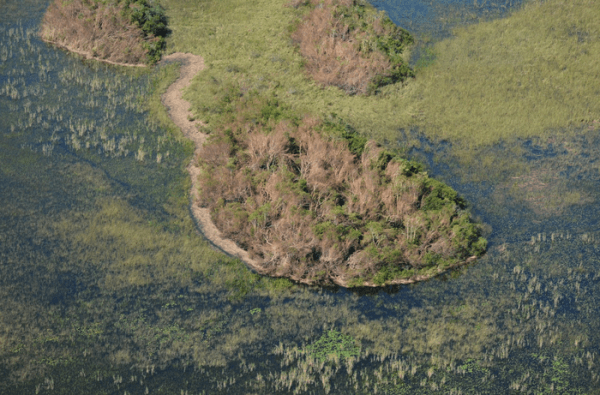In a new study of the ecological impacts of hurricanes, an international research team addresses a question that people have asked for centuries: when confronted by a storm, is it better to be resistant like an oak or resilient like a willow?
The team’s findings, reported in the March 2nd issue of Science Advances, can help guide managers as they plan for climate change and a growing coastal population threatened by tropical storms that are more intense and track farther into temperate latitudes. The findings also provide a framework for guiding management decisions related to other disturbances, such as nutrient pollution or wildfires.
The study’s lead author, Dr. Christopher Patrick of William & Mary’s Virginia Institute of Marine Science, says “We found that coastal ecosystems display consistent tradeoffs between resistance and resilience to tropical cyclones. Our findings emphasize that managing for increased resistance may result in decreased resilience, and vice versa. That knowledge is key for coastal decision making, particularly as climate change alters the risk profile with stronger, more frequent mid-latitude storms.”
Patrick illustrates these management trade-offs with an example from his role as director of the Seagrass Monitoring and Restoration Program at VIMS. “In the Chesapeake Bay,” he says, “ eelgrass tends to be more stable through time than widgeon grass, but takes longer to recover from disturbances such as hurricanes. This trade-off, which would also apply to diebacks from water quality or heat stress, is an important consideration for coastal managers when choosing which species of seagrass to restore.”
Read more at: Virginia Institute of Marine Science
Hurricane Irma caused extensive damage to mangrove forests within Everglades National Park when it made landfall in 2017. The storm also deposited a large amount of marine wrack along the shoreline. (Photo Credit: Stephen Davis, Everglades Foundation.)


